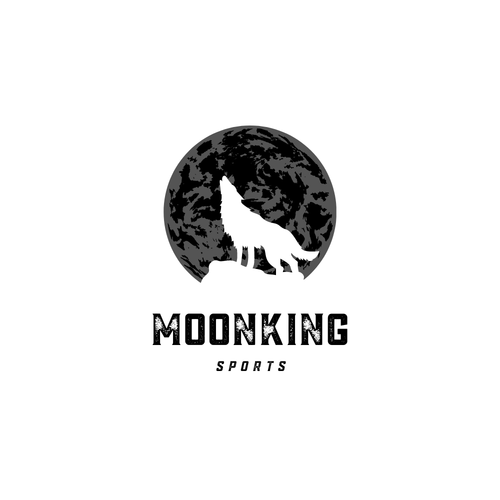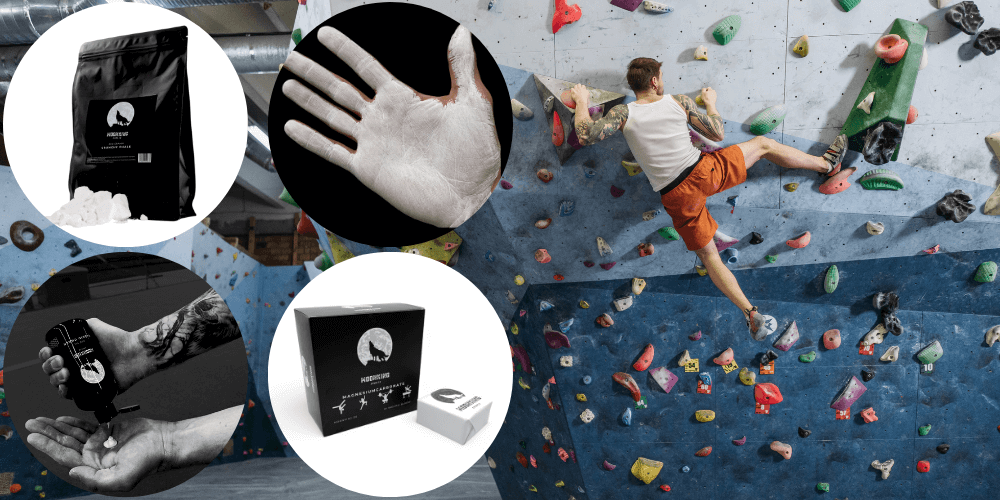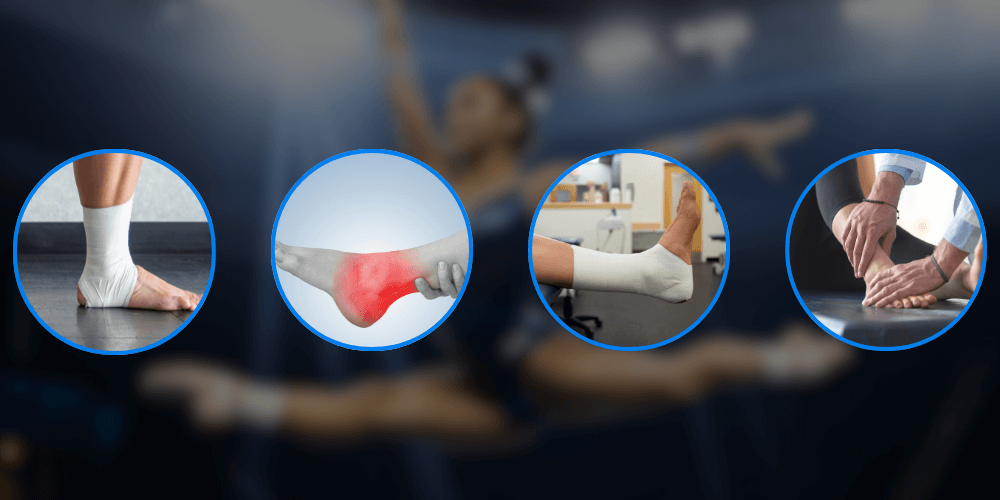Magnesia in Sports: Everything you need to know about chalk, grip and control
Magnesia —also known as chalk, climbing chalk, or simply magnesium for the hands—has become an indispensable part of sports. Whether in gymnastics, climbing, bouldering, or weightlifting, this powder ensures dry hands, better grip, and ultimately, safety and improved performance. But what kind of material is magnesia? Why is it so popular in sports? What types are there—and which one is right for you? This comprehensive guide provides all the answers, fact-based, application-oriented, and with the goal of giving you the best overview of magnesia in sports.
What is magnesia actually?
When people talk about magnesia in the world of sports, they usually mean magnesium carbonate – a fine, white powder obtained from natural magnesium minerals. The correct chemical name is MgCO₃. It has the special property of binding moisture, especially sweat. This is why it is also referred to as "magnesium for the hands." It is important to understand that in this context, athletes are not referring to the mineral magnesium, which is taken as a dietary supplement, but rather to magnesia – a drying agent applied purely externally.
If you search for “magnesium sports hands” or “magnesium for sports hands” on Google, in 99 percent of cases you mean magnesia.
Why is magnesia so popular in sports?
The main reason for the popularity of magnesia in sports is its ability to keep hands dry. Whether you're gymnastics, climbing, bouldering, or weightlifting, sweaty hands are dangerous. They lead to insecurity, slipping, and, in the worst case, injury. This is where magnesia comes in. It absorbs moisture, improves friction between skin and surface, and thus gives you back control.
It's widely used in gymnastics to prevent slipping on all types of equipment, such as uneven bars, rings, parallel bars, and the horizontal bar. It's also firmly established in the climbing scene as climbing chalk – both indoors and on rock. And in strength training, both professionals and amateurs rely on liquid chalk or powder to grip the barbell securely. The use of magnesium in the hands isn't just a comfort factor, but also a true performance enhancer.
What kind of material is magnesia?
Magnesia is a naturally occurring salt – magnesium carbonate – that is processed through physical processes such as drying and grinding. It is non-toxic, skin-friendly, and does not react chemically with the skin. Instead, it binds moisture to the skin's surface purely physically. Various grain sizes and forms are available, from ultrafine magnesia powder to coarse-grained "nuggets" to a mix of both, known as crunchy chalk .
In sports, people often refer to chalk magnesium or simply chalk. This term is especially common in climbing and bouldering. It's important to remember that whether you use magnesia powder, chalk balls, or liquid chalk, the basic material is always the same: magnesium carbonate.
Areas of application: Where is magnesia used?
Magnesia is used wherever dry hands are crucial for safety, precision, and performance. The three most important sports are:
1. Gymnastics
In artistic gymnastics, magnesium is mandatory. Whether on the high bar, parallel bars, rings, or vault, a secure grip is essential for proper technique and injury prevention. Magnesium gymnastics involves gymnasts regularly rubbing their hands with powder or blocks to optimize grip. Daily application of magnesium to the hands has long been standard, especially in competitive gymnastics.
2. Climbing & Bouldering
Climbing is almost synonymous with a clean grip on the rock or in the gym, although the term climbing chalk is increasingly used in these sports. Using magnesium in bouldering is crucial, especially on short, intense routes. A slippery grip can mean the difference between success and a fall. Liquid chalk is popular in climbing gyms because it creates less dust. Outdoors, many people reach for block chalk or chalk balls for better control of the application. Therefore, the choice of climbing magnesium or climbing chalk is always a personal one – depending on preference and environment.
3. Strength training, CrossFit & Calisthenics
In weightlifting, powerlifting, and CrossFit, magnesium is used to maintain control of the barbell or bodyweight during deadlifts, pull-ups, or clean and jerks. Liquid chalk is particularly popular because it dries quickly, produces little dust, and holds reliably during intense workouts. Magnesium for the hands has long been an integral part of any good training bag in strength training.
Variants: What magnesia products are there?
There are various forms of magnesia available. Here are the most common:
Magnesia powder
The classic. Finely ground, creates a lot of dust, but offers maximum grip. Especially suitable for gymnastics and bouldering. At MoonKing, for example, you can find Crunchy Chalk – coarser, grippier, and more pleasant on the skin.
Liquid Chalk
A liquid version with alcohol that dries quickly and leaves hardly any residue. Popular for indoor use, CrossFit, or climbing gyms with a dust ban. Liquid chalk is ideal if you want precise dosing and value cleanliness.
Chalk Ball
A fabric ball filled with chalk powder. You squeeze it in your hand, releasing only small amounts onto your skin. Very popular in climbing gyms and for mobile use. Chalk balls reduce waste and are especially beginner-friendly.
Block Chalk
Pressed magnesia in block form – easy to transport and economical to use. Ideal for on-the-go use or for individual dosing. Many climbers combine block chalk with an additional storage box.
Application: How to use magnesia correctly
The goal is to spread a fine, even layer over the hand. Too much chalk is counterproductive—it can clump or even reduce friction. For competition or training, a small amount, evenly distributed over the palm and fingertips, is usually sufficient.
After training, you should wash your hands thoroughly and ideally apply a moisturizing cream – because magnesium for the hands dries out not only sweat but also the skin. However, it's generally harmless.
Magnesia in the history of sports
As early as the 19th century, chalk was used in gymnastics – long before its commercial distribution. When climbing gained popularity in the 1970s, chalk found its place there as well. Today, chalk magnesium is present in almost every sport where grip strength is crucial. From the Olympics to bouldering gyms, chalk magnesium is a standard that no one can do without.
Which product is right for you?
If you're into gymnastics, we recommend classic chalk powder, crunchy chalk, or blocks—depending on availability and preference. Block chalk is practical for outdoor climbing, while liquid chalk is ideal for indoor climbing. Liquid chalk is especially popular in strength training due to its efficiency and cleanliness.
The best thing to do: Test different products and find out which one works best for your training. At MoonKing, you'll find all the options in the highest quality – tailored to the needs of athletes.
Insider tip: If you travel often or like to workout at home, liquid chalk is a great option. It's incredibly easy to use, clean, and fits in any gym bag.
Conclusion: Magnesia is mandatory for serious training
If you want to train in a controlled, safe, and performance-oriented manner, there's no substitute for magnesium. Whether you're doing gymnastics, bouldering, weightlifting, or CrossFit, magnesium for your hands is a crucial factor in sports technique and safety.
Simply by using chalk correctly, you can reduce your risk of injury, improve your technique, and strengthen your mental confidence. Avoiding slippery hands gives you more control, better power transfer, and more focus on what matters: the sport.
If you're still unsure which product is right for you, contact us . We'll help you find the right magnesia for your needs.









